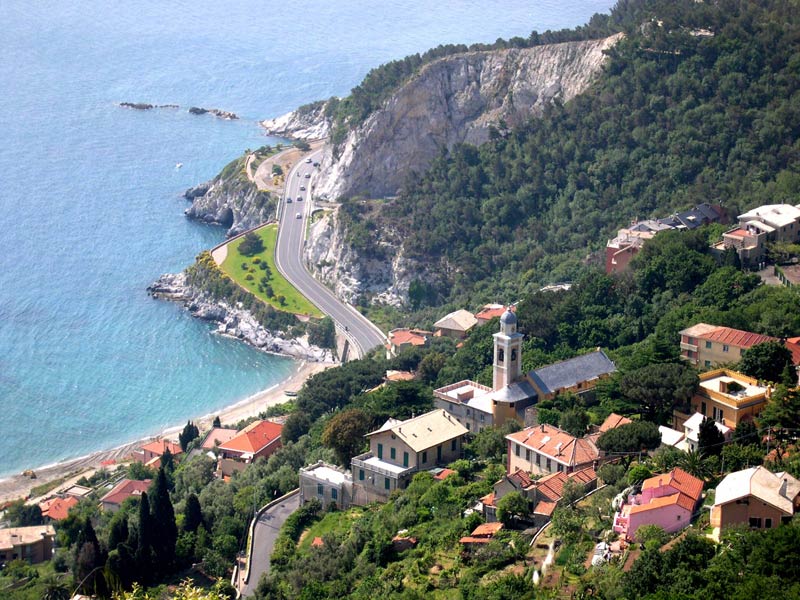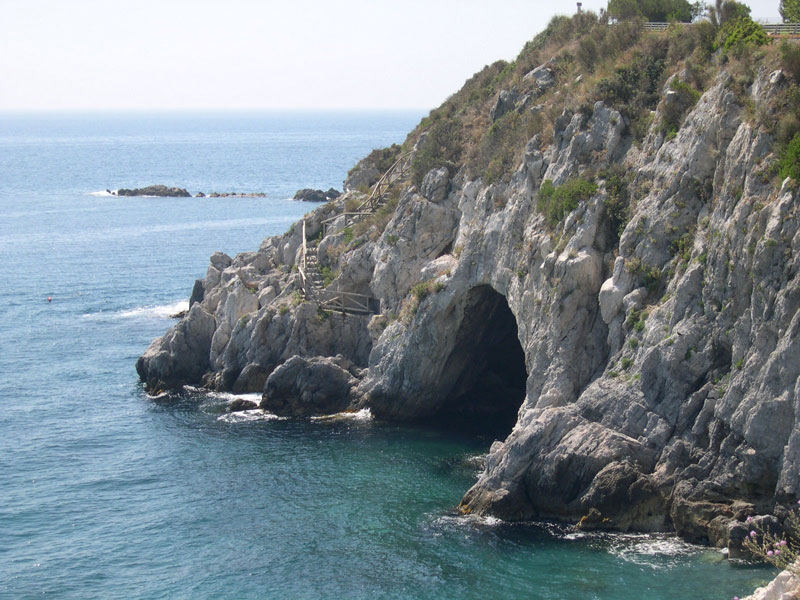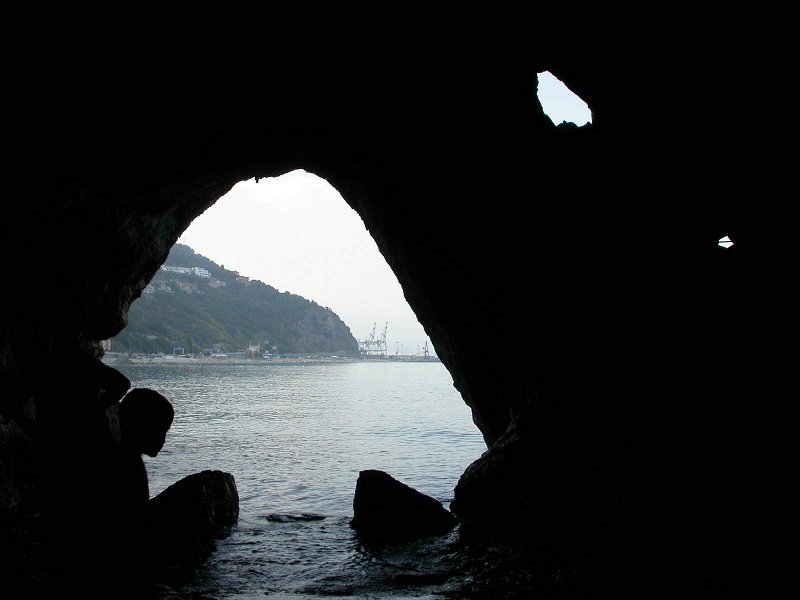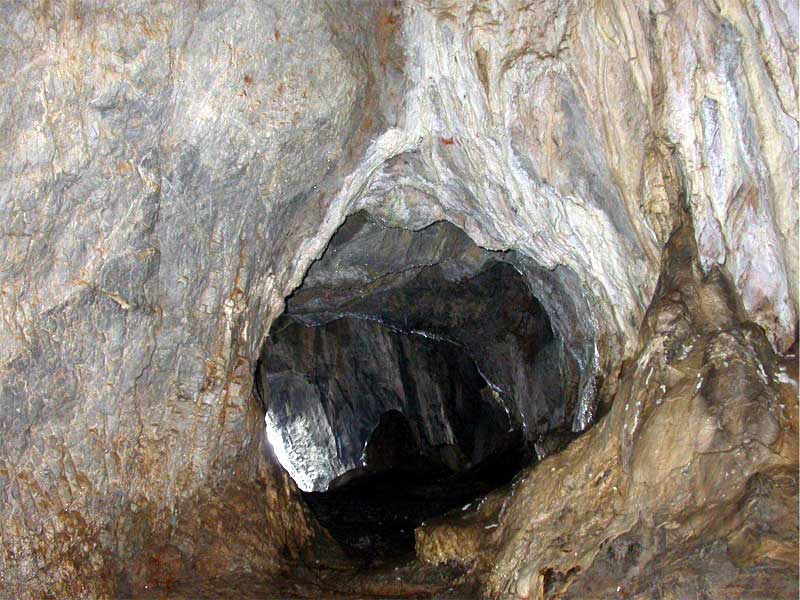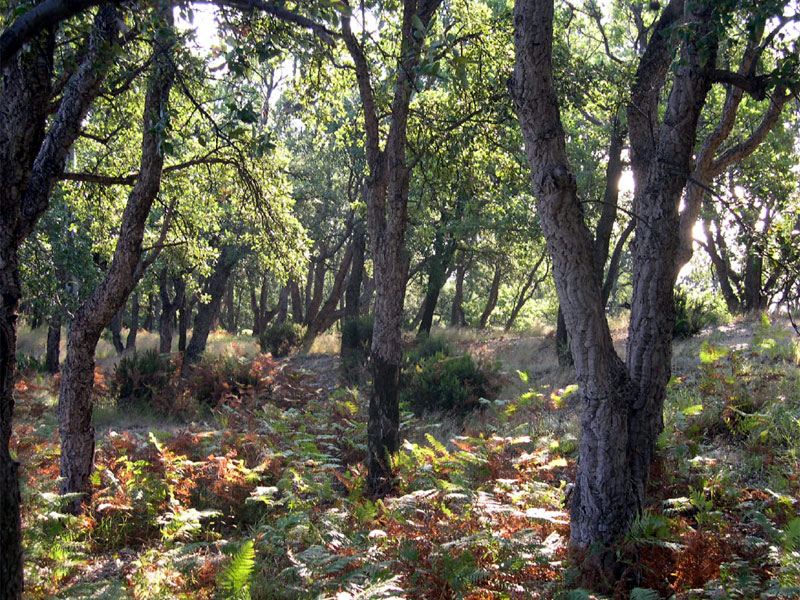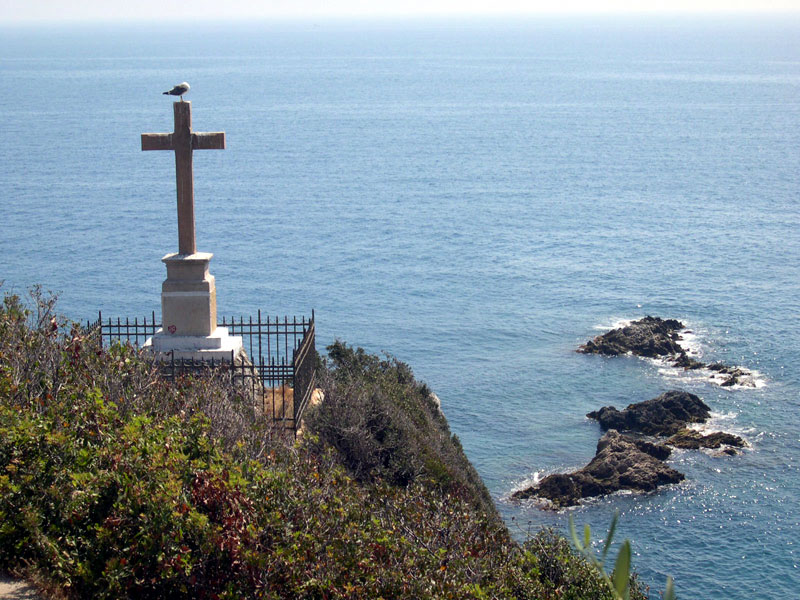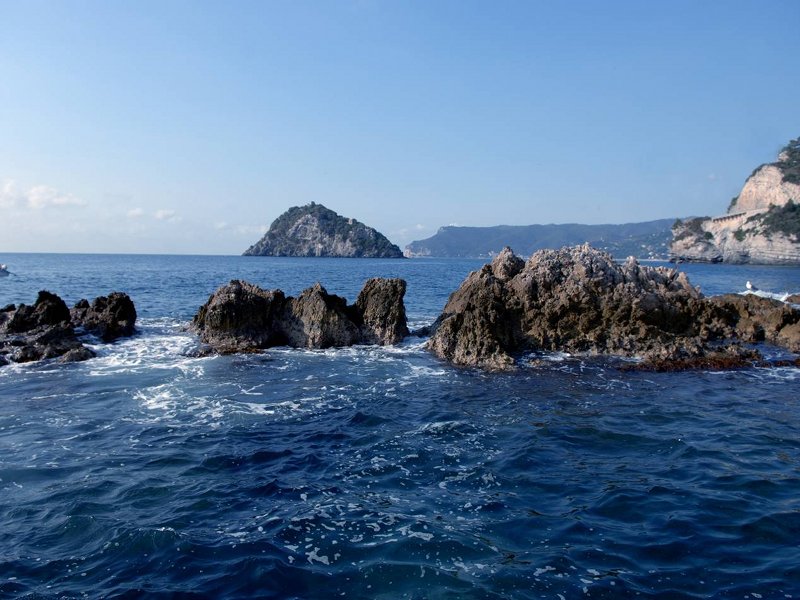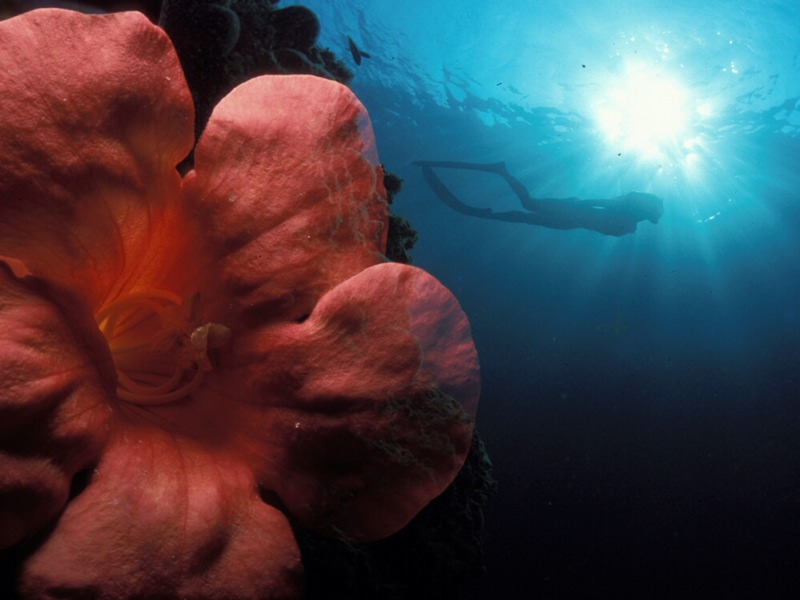Points of Interest
Bergeggi Island
The coastal stretch between Bergeggi and Spotorno has a varied
morphology alternating small beaches and short promontories to
overhanging cliffs, in which the sea dug some small caves.
In front
of it, not too far from the mainland, there is the small Island of
Bergeggi, a suggestive cone of calcareous rock reaching 53 meters of
height. The island and the rocky coast facing it are part of Bergeggi Regional Nature Reserve since 1985.
It seems that in ancient times the island was linked to the coast by a
narrow rocky tongue, which was afterwards destroyed by the wave motion.
Nowadays it is rocky and overhanging, only partly covered by
Mediterranean vegetation. Among the most interesting vegetal species
there are the Campanula sabatia, exclusive of western Liguria and the spurge (Euphorbia dendroides), a shrub which loses its leaves at the beginning of summer and recovers them in autumn.
The island of Bergeggi preserves considerable historical and
archaeological evidences. On the top of it there are the ruins of
military and religious buildings dating back to different epochs. The
most ancient buildings were probably built during the late Roman
period. In the highest point of the island the basis of a massif
cylindrical building are preserved: it probably was a watchtower or a
lighthouse built for the nearby port of Vada Sabatia (the current Vado
Ligure).
In the Middle Ages, the island of Bergeggi, like the other small
Ligurian islands, was for a long time the seat of monastic communities.
The ruins of a small early Christian church dating back to the 5th-6th
century and the larger ones of a two-aisle Roman building dating back
to the 11th century are an evidence. The remains of a square-based
tower also date back to the Middle Ages, while the circular building
nearby is likely to be Roman.
In front of the tower, on the mainland, there is a similar tower, the
tower of Ere, which was part of the same defensive system.
The Marine Cave and the Railway Gallery Cave
Despite the presence of the SS road crossing the cliff and the proximity of the residential center of Torre del Mare, the rocky coast in front of the island of Bergeggi still preserves its wild aspect. The calcareous cliff houses some very charming caves. The most famous one is the Marine Cave of Bergeggi which is situated near Punta delle Grotte.
Bergeggi Marine Cave
The Marine Cave of Bergeggi is formed by a large main cavity where
nowadays there is the sea, and by some branches situated at higher
levels. Precious prehistorical finds have been found here, among which
ware dating back to the Middle Neolithic Age and human remains of which
it is not possible to establish a date.
During the Neolithic Age
(5000-2000 BC) the sea level was probably lower than the current one,
since the cave was used by primitive men as a shelter. On the contrary,
the presence on the vault and on the walls of the cavern of several
holes produced by ancient lithophagous molluscs witnesses that in other
epochs the sea level was higher than the current shore-line. Such
oscillations of the sea level must be linked to the alternation of
glacial and interglacial periods which took place during the
Quaternary: during the coldest periods, enormous quantities of water
remained still on the continents as ice, causing the reduction of the
sea level; on the contrary, in the hottest periods, the melting of the
glaciers caused the growth of the sea level.
You can enter the Marine Cave of Bergeggi with a small boat, and the
same can be done to enter the "Grotta delle Sirene" (Cave of the
Mermaids) which opens a little more in the South, beyond Punta Predani.
The Railway Gallery Cave
Not very far from it there is another interesting cave, that of the "Galleria Ferroviaria" (Railway Gallery), a karst cave developing for more than 400 meters. It was casually discovered in 1870, during the excavations for the railway gallery crossing the Bergeggi promontory. The opening gallery of the cave has been in disuse for years, but the initial stretch of the karst cavity still shows the dirt of the soot produced by the steam locomotives. The cave consists of several halls of different dimensions. The bottom of the largest hall housed a beautiful lake which no longer exists because the building of the new railway gallery uphill the cave changed the course of the water bearing layer feeding it.
The Town and Art of Bergeggi
Everyone visiting the village of Bergeggi is enchanted from the so-called "carruggi". They are narrow and closed streets, characteristic of the Ligurian landscapes, and described several times in the lyrics by Montale.
Another characteristic wonder of the village are the "e miagge" (dry-stone walls) which are considered one of the main symbols of Bergeggi, a direct evidence of the effort and of the work of man who, adapting to a dry land with steep slopes, built the terraces which made it possible to cultivate olive trees, vineyards, and other products. To complete the itinerary, we suggest a visit to the Church which, according to the tradition was built after the passage of San Martino di Tours, to whom it is dedicated.
The ancient 16th century church was entirely renovated at the beginning of the 18th century, while the baptistry and the main altar date back to the 19th century. It has one nave, with six lateral chapels and barrel vaults. Among the works of art, we quote the holy-water stoup dating back to 1581, the 16th century altar piece with Madonna del Rosario between San Domenico and Caterina by the Tuscan painters and a Crucifix by Anton Maria Maragliano (1738).
Natte Cork Oak Woodland
The cork oak woodland of Bergeggi, which is private property, is the largest cork oak woodland of the middle-western Liguria.
Situated on the south-eastern slope of the municipal territory, it will be transformed into a provincial protected area (L.R. n. 3/1999, DGP 290/64038 of 7/11/2000).
The station extends itself on the slopes of Mt. Rocchetto, between 250 and 200m asl, mainly on a schist substratum.
The cork oaks are organized in more or less thick nuclei, together with Quercus pubescens or, towards the edges of the area, in isolated specimens. Where the ground is deeper, the individuals of Quercus suber have a rather big size (height: 9-10m, trunk diameter: about 40cm) and present a strong renewal.
The station might have had in the past a larger extension, since other cork oaks are widespread in the adjacent urbanized area near the colony of S. Sebastiano.
The cork oak is recognized as a particularly valuable botanic species, since it grows and develops only in particular climatic-ecological conditions; for this reason its distribution in the Mediterranean basin is very irregular.
Sites of Community Importance (SCI)
According to the Community Directive HABITAT 92/43, three areas within the territory of Bergeggi have been chosen by Regione Liguria and by the Department of the Environment as Sites of Community Importance (SCI) for the presence of vegetation habitats and animal and vegetable species of considerable naturalistic interest at a European level.
The three SCI have been called:
1. Rocca dei Corvi - Mao - Mortou
The site is important for the floristic and vegetation contrasts linked to the differences of the geological substrata (among which, the dolomitic limestone seem to be particularly influencing the substrata), of the exposure allowing the presence not very far from the sea and at not very high altitudes of fragments of moorlands with calluna and of beech tree woods. Some aspects of Mediterranean maquis and of cork oak wood seem to be in good conditions. The xerophilous grasslands, locally rich in orchids and in remains of riparian woodlands, are among the most interesting habitats.
The SCI including Monte Mao is characterized by the variety of habitats (temporary habitats and meadows on a calcareous substratum) and by the different endemic or rare species like Campanula sabatia and Pelodytes punctatus.
Despite being a partly degraded habitat without permanent ponds, the former dolomia quarry situated near the top of the Mountain has been colonized by rare Amphibians of considerable interest like the Parsley frog, the European Green Toad, and the Common tree frog.
2. Bergeggi Island - Punta Predani
The area is made by 2 subsites: an insular site and a coastal site, directly in front of it.
There are important aspects of karstic and marine erosion (caves with finds witnessing the presence of past bradyseisms) on a dolomitic substratum. The island of Bergeggi presents a middle-high rocky coast, while the area of Punta Predani has the bottom of the valley crossed by a small rio.
Among the present habitats with more scientific value there are the fragments of Mediterranean maquis with Arborescent spurge and the extremely reduced aspects. On the cliffs near the sea, subject to the splashes of the waves, there are aphiolitic communities.
3. Noli Seabed - Bergeggi
The site, divided into 4 subsites, is characterized by Posidonia oceanica beds and by rocky stretches with Coralligenous.
The southernmost site, in front of Noli, includes a P. oceanica bed of about 40 ha, which in its northern part, at the border with Spotorno, becomes wider and gets closer to the shore.
The other three subsites include a Posidonia bed extending between Spotorno and Bergeggi, with a surface of 80 ha. The bed is fragmented and presents various signs of regression and areas characterized by dead "matte", probably because of the re-feeding carried out in the last decades.
The seabed in front of the calcareous cliff of Bergeggi and the homonymous island has a considerable naturalistic interest.
Bergeggi Marine Cave is a considerably diversified environment rich in biological populations and in species.
As far as the island is concerned, the bathymetric gradients and the various exposures of the substratum favored the settlement of several biological associations, among which the Coralligenous associations, with a high specific richness.


